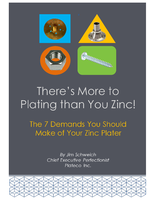Quiet Piles Help Protect Marine Life in the Puget Sound
New pile driving technology could have a significant impact on marine construction projects, not only in the Puget Sound, but nationwide. Due to the intense sound coming from pile driving into the seabed, and the potential harm to sea life, federal law allows this type of activity only for six months a year.
But new technology is coming forth, developed by the University of Washington and Machinists Inc. could be a "game changer" in the marine construction industry. UW graduate student Tim Dardis began working on this new technology several years ago.
As a masters student, Dardis researched why pile driving is noisy. As a PhD student, his goal was to create a pile that was less noisy.
"Our first test was very successful. Our equipment that Machinists Inc. helped us make resulting in a big reduction in noise, 20 db and peak sound pressure. That is enough to be a really big game changer in the world of pile driving," Dardis said.
Dardis designed and did some subscale testing for parts he prototyped and manufactured himself.
"Then when I got to the final design, and we wanted to make a full scale prototype, I went to Machinists Inc., because they are the best in town," Dardis said. "I think they are probably the only people that could make this for us. I gave them my design and we built it."
When the project came to Machinist Inc. it was very high level, said Jeff Tomson, Machinists Inc., director of marketing. It took several months working with Dardis on the design and manufacturability.
The Washington State Department of Transportation provided long chunks of construction tubing for the piles themselves.
"Our role was to create an assembly that would go on the end and the interfacing. It is a pile on top of a pile. Its like a large shock absorber," Tomson said. "It's that interface joint that we manufactured, then welded into place. Did all the final machining on the large diameter tubes. There's quite a complex joint with some very large diameter o-rings. Pretty tight tolerances for the large structural steel."
There were 8-10 components in the joint that Machinists Inc. had to create and weld into place. These parts were then re-machined, because of the distortion in the welding process.
"You are machining pretty large diameter, heavyweight parts. These are water tight tolerances. The surfaces had to be o-ring smooth," Tomson said.
Once Machinists Inc. manufactured the part, it was shipped to a pile driving company in Tacoma, which added an extension onto the part, and then loaded the complete pile onto a barge, which was taken to the UW driving site in Commencement Bay.
Hydrophones were placed in the water to measure the noise. Immediately, it was evident, this would be a game changer.
"As soon as we started driving, everyone in the crew knew this was going to be a big deal. Really made an advancement," Dardis said.
In the state of Washington with so many endangered species, there are very strict underwater noise restrictions related to underwater construction, Dardis said. Because of those regulations, there are only certain months of year when you can drive piles in the Puget Sound because of the damage to aquatic life.
"With the UW quiet pile, it is so much quieter that it brings noise levels below the threshold for this marine life. What we are ultimately for, not only to reduce cost to drive these, but possibly we might be able to drive 12 months out of the year, instead of six months, which ultimately reduces the price to the taxpayer for these large civil structures done by the state," Dardis said.
For Dardis, working with Machinists Inc. was the only way to go.
"I always had really great luck. My advisor had a relationship with Machinists Inc. It was just a natural marriage for me to go there with this project," Dardis said. "They blew us away. We were on a super tight schedule. They were willing to work overtime and weekends to help us meet the schedule. And the quality of work was absolutely perfect."
The UW and WSDOT recently put together a symposium on the new quiet pile technology, where they discussed the results with hundreds people involved in the marine construction industry. After meeting with the major players, if everything is a go, Dardis said this could be adapted as mainstream technology by the end of 2015.
For more information contact Jeff Tomson, Machinists Inc., 206-763-0990 - www.machinistsinc.com




